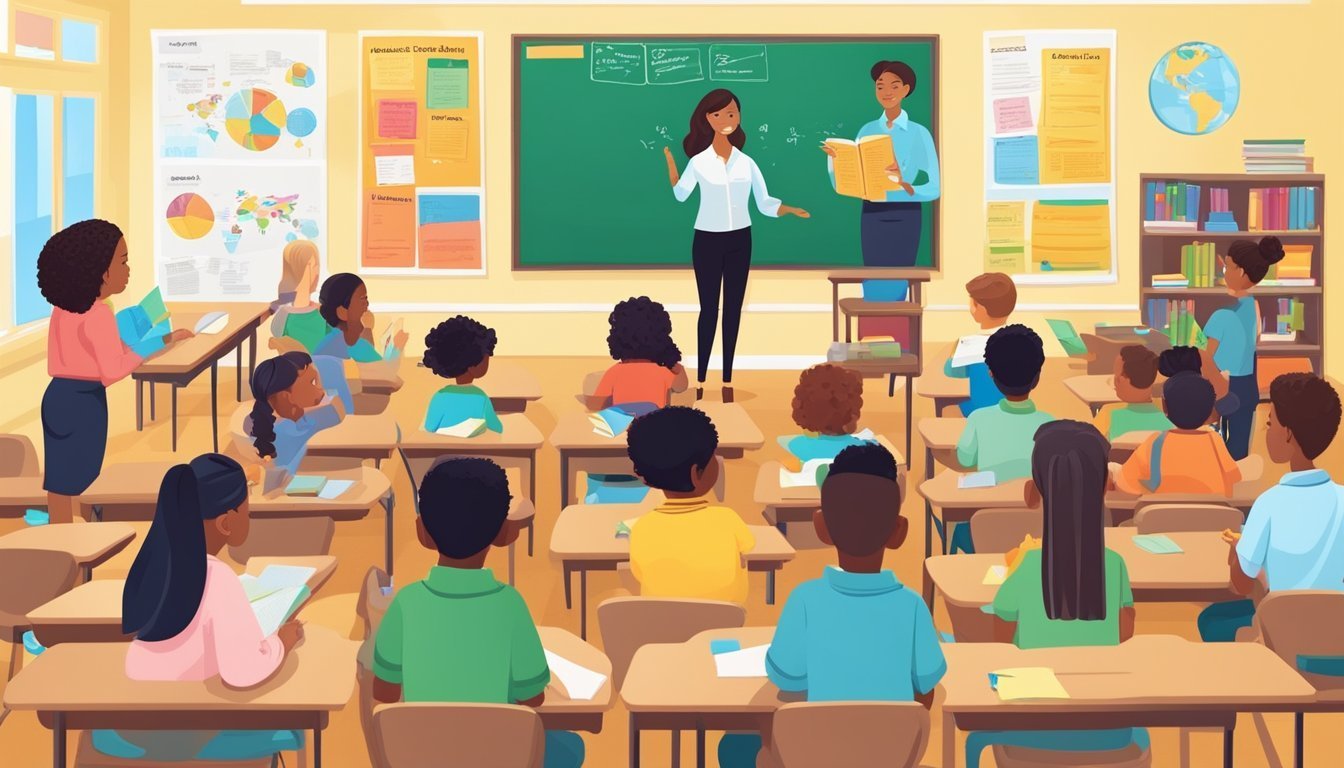In Madera, a quaint town nestled in California’s Central Valley, a remarkable transformation has unfolded in the realm of education.
Washington Elementary School, where Bárbara Flores began her educational journey as a kindergartener in 1953, stands witness to this change.
As a child eager to learn, influenced by her family’s hopeful outlook, Flores entered a world that should have been welcoming.
Unfortunately, she quickly felt like an outsider as a Spanish speaker lost in an English-centric environment.
Overwhelmed by frustration and isolation, she left, convinced her language and cultural identity were not valued.
Embracing Bilingual Education
Today, Flores has returned to Washington Elementary, where the building remains familiar yet the atmosphere has radically changed.
The school now embraces a dual-language immersion approach that celebrates bilingualism.
Students are taught in both Spanish and English, immersing them in an environment rich in Hispanic culture and pride.
These graduates leave school equipped with strong skills in reading, writing, and speaking in both languages, a stark contrast to Flores’s early experience.
California’s journey with bilingual education has been anything but straightforward.
The education policy landscape has shifted dramatically over the decades.
From the late 1800s, English-only instruction dominated schools, a trend that endured until the 1970s when Ronald Reagan began to abolish such restrictions.
The Civil Rights Movement brought newfound hope for bilingual education, yet a surge in anti-immigrant sentiments led to a ban that voters imposed in 1998—a ban that would take until 2016 to finally lift.
Challenges and Opportunities
Numerous studies highlight the positive impact of bilingual education on students, showing benefits like improved English language acquisition, enhanced standardized test performance, higher graduation rates, and better readiness for college.
Despite the hopeful developments after the repeal in 2016, California still grapples with challenges stemming from years of inadequate funding and a dwindling supply of bilingual educators.
When compared to states like Texas, which enrolls approximately 40% of its English learners in bilingual classrooms, California’s figure of just 10% paints a worrying picture of educational opportunities.
This stark contrast emphasizes the significant hurdles facing California as it strives to promote bilingual education amid teacher shortages and financial limitations.
With the lifting of restrictive laws, enrollment in California’s bilingual teacher preparation programs has declined, resulting in a fragmented and inconsistent educator workforce.
Although some members of the California Legislature recognize the problem, efforts to tackle it have mostly been localized, lacking a comprehensive approach that could enhance the number of bilingual educators.
A Hopeful Future
While initiatives to breathe new life into bilingual education are underway, progress remains limited, largely hindered by insufficient support and resources.
Compounding these challenges are disparities in educational funding between California and states such as Texas and New York, highlighting an urgent need for increased financial investment.
On a more hopeful note, local districts like Madera are starting to embrace dual-language education as essential for boosting overall performance, particularly for immigrant families.
There’s a growing shift in public attitudes, fueled by advocacy and active community involvement, toward greater support for bilingual programs.
Yet, the journey ahead for bilingual education in California remains uncertain.
Advocates are tirelessly working to expand programs and secure funding, aiming to transform the concept of language diversity from a hurdle into a celebrated asset in education.
Despite the obstacles, districts like Madera Unified are resolute in their commitment to advancing bilingual education, paving the way for a brighter and more inclusive future in California’s educational framework.
Source: The74million


